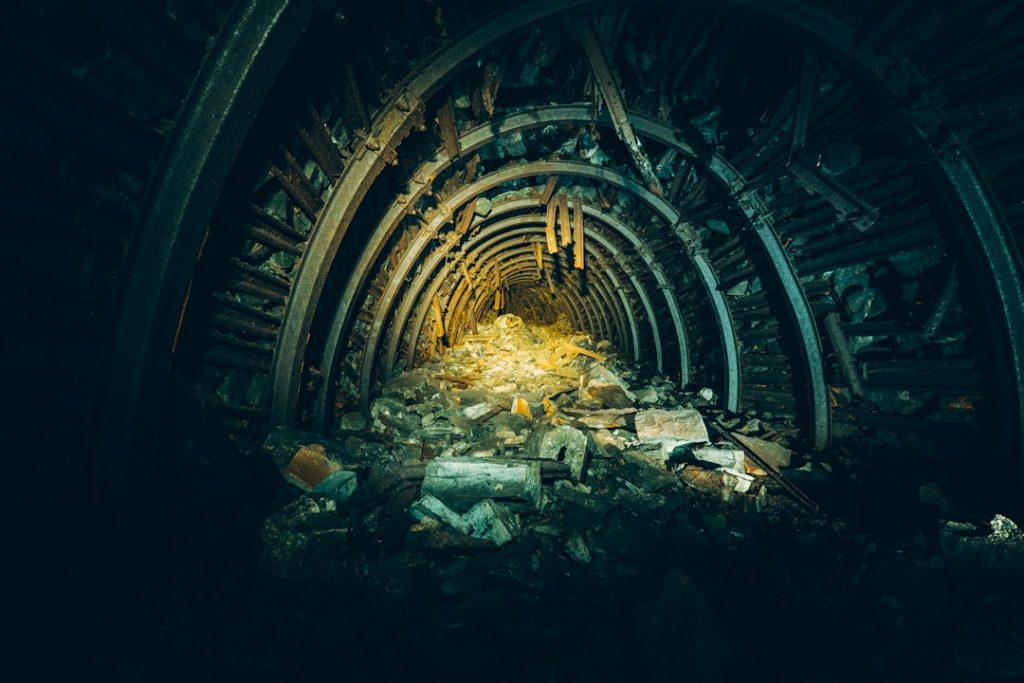Briquette manufacturing is the process of creating compact blocks of combustible biomass material, such as charcoal, wood, sawdust, or agricultural residues, for use as fuel. These briquettes are an eco-friendly alternative to traditional fuels like coal and wood, as they are made from renewable resources and produce less smoke and ash when burned. Over the years, the manufacturing techniques for briquettes have evolved, with traditional methods giving way to more advanced and innovative approaches. This article will explore the different techniques used in briquette manufacturing, from traditional methods to cutting-edge technologies, as well as the materials and equipment involved in the process. Additionally, we will discuss the environmental benefits of advanced briquette manufacturing techniques and look at future trends in the industry.
Traditional Briquette Manufacturing Methods
Historically, briquettes were made using simple and labor-intensive methods that involved hand-pressing a mixture of biomass material and a binder, such as clay or tar, into compact blocks. These traditional techniques required a lot of manual labor and were not very efficient in terms of production capacity and quality control. However, they laid the foundation for modern briquette manufacturing and are still used in some parts of the world where access to advanced technology is limited. In these traditional methods, the biomass material is first dried to reduce its moisture content, then mixed with a binder and pressed into molds using hand-operated presses. The briquettes are then sun-dried or baked in kilns to cure them before they can be used as fuel.
Another traditional method of briquette manufacturing is the use of piston presses, which are manually operated machines that compress the biomass material into briquettes using a piston and a mold. While these methods have been effective in producing briquettes for many years, they are not as efficient or cost-effective as more advanced techniques. Despite their limitations, traditional briquette manufacturing methods continue to be used in some regions due to their simplicity and low cost.
Advanced Briquette Manufacturing Techniques
In recent years, advanced briquette manufacturing techniques have emerged, offering more efficient and sustainable methods for producing high-quality briquettes. One such technique is mechanical briquetting, which involves using machines to compress the biomass material into briquettes. These machines come in various designs and capacities, ranging from small-scale manual presses to large-scale automated systems. Mechanical briquetting offers several advantages over traditional methods, including higher production capacity, better quality control, and reduced labor requirements.
Another advanced technique is hydraulic briquetting, which uses hydraulic pressure to compress the biomass material into briquettes. This method is particularly effective for materials with high moisture content, as the hydraulic pressure can squeeze out excess water during the compression process. Hydraulic briquetting machines are available in different sizes and configurations, making them suitable for a wide range of production needs. Additionally, some advanced briquette manufacturing techniques utilize heat and pressure to bind the biomass material together without the need for external binders, resulting in cleaner and more efficient briquettes.
Innovative Materials for Briquette Manufacturing
| Material | Advantages | Disadvantages |
|---|---|---|
| Sawdust | Readily available, low cost | Low energy density |
| Rice husk | High silica content, high energy density | Requires pre-treatment |
| Bagasse | High cellulose content, renewable | High ash content |
While traditional briquettes are typically made from wood, charcoal, or agricultural residues, innovative materials are being explored for use in briquette manufacturing. One such material is biomass pellets, which are small cylindrical pellets made from compressed biomass material. These pellets can be used as a raw material for briquette manufacturing, offering a more uniform and consistent feedstock compared to loose biomass material. Additionally, some manufacturers are experimenting with blending different types of biomass material to create customized briquettes with specific combustion properties and energy content.
Another innovative approach is the use of waste materials, such as paper sludge, coffee husks, or nut shells, as feedstock for briquette manufacturing. By repurposing these waste materials into fuel briquettes, manufacturers can reduce waste disposal costs and minimize environmental impact. Additionally, using waste materials for briquette manufacturing helps to conserve natural resources and reduce the demand for traditional fuels like coal and wood. As the industry continues to evolve, it is likely that more innovative materials will be developed for use in briquette manufacturing, further expanding the range of sustainable fuel options available.
Cutting-Edge Briquette Manufacturing Equipment
Advanced briquette manufacturing techniques require specialized equipment to efficiently process biomass material into high-quality briquettes. One key piece of equipment is the biomass dryer, which is used to reduce the moisture content of the feedstock before it is compressed into briquettes. Biomass dryers come in various designs, including rotary dryers, fluidized bed dryers, and belt dryers, each offering different levels of efficiency and energy consumption.
Another essential piece of equipment is the briquetting machine itself, which can vary in design and capacity depending on the production requirements. Mechanical briquetting machines typically use screw or piston presses to compress the biomass material into briquettes, while hydraulic briquetting machines utilize hydraulic pressure to achieve the same result. These machines may also feature automatic feeding systems, moisture control mechanisms, and quality monitoring sensors to ensure consistent and reliable production.
In addition to briquetting machines and dryers, other equipment such as grinders, mixers, and conveyors are used in the manufacturing process to prepare and transport the biomass material. Some manufacturers also invest in post-processing equipment like carbonization furnaces or pellet mills to further refine the briquettes into higher-value products. Overall, cutting-edge briquette manufacturing equipment plays a crucial role in optimizing production efficiency and product quality.
Environmental Benefits of Advanced Briquette Manufacturing Techniques

The adoption of advanced briquette manufacturing techniques offers several environmental benefits compared to traditional fuel sources like coal and wood. Firstly, using biomass material for briquette manufacturing helps to reduce deforestation by providing an alternative fuel source that does not rely on cutting down trees. This contributes to forest conservation efforts and helps to maintain biodiversity in natural ecosystems.
Furthermore, advanced briquette manufacturing techniques produce cleaner-burning fuel with lower emissions of harmful pollutants like sulfur dioxide and particulate matter. This can lead to improved air quality and reduced health risks for communities that rely on solid fuels for cooking and heating. Additionally, by utilizing waste materials for briquette manufacturing, manufacturers can contribute to waste reduction and landfill diversion efforts, further minimizing environmental impact.
Another environmental benefit of advanced briquette manufacturing techniques is their potential to mitigate climate change by reducing greenhouse gas emissions. Biomass-based fuels like briquettes are considered carbon-neutral because the carbon dioxide released during combustion is offset by the carbon dioxide absorbed by the plants during their growth. This makes them a more sustainable alternative to fossil fuels and contributes to global efforts to reduce carbon emissions.
Future Trends in Briquette Manufacturing
Looking ahead, several trends are expected to shape the future of briquette manufacturing. One trend is the increasing use of automation and digitalization in production processes to improve efficiency and reduce operational costs. Advanced technologies such as artificial intelligence and machine learning may be integrated into briquetting equipment to optimize performance and enable predictive maintenance.
Another trend is the development of new feedstock sources for briquette manufacturing, including non-traditional biomass materials like algae or aquatic plants. These alternative feedstocks offer potential advantages such as rapid growth rates and minimal land use requirements, making them attractive options for sustainable fuel production.
Furthermore, there is growing interest in decentralized or small-scale briquette manufacturing systems that can be deployed in rural or remote areas to provide clean cooking fuel for off-grid communities. These systems may utilize mobile or modular equipment that can be easily transported and set up in local facilities.
In conclusion, advanced briquette manufacturing techniques offer a sustainable and eco-friendly solution for producing clean-burning fuel from renewable biomass resources. By leveraging innovative materials, cutting-edge equipment, and environmentally friendly processes, manufacturers can contribute to forest conservation, waste reduction, and climate change mitigation. As the industry continues to evolve, future trends in automation, alternative feedstocks, and decentralized production systems are expected to further enhance the efficiency and accessibility of briquette manufacturing on a global scale.
If you’re interested in advanced briquette manufacturing methods, you may also want to check out this article on Dependable Coal Briquette Supply Chain for Industry. This article discusses the importance of a reliable supply chain for coal briquettes in the industrial sector, which is crucial for ensuring consistent and high-quality production. It provides valuable insights into the logistics and distribution aspects of briquette manufacturing, making it a valuable resource for those looking to optimize their production processes.
FAQs
What are advanced briquette manufacturing methods?
Advanced briquette manufacturing methods refer to the use of innovative techniques and technologies to produce high-quality briquettes from biomass or other materials. These methods often involve the use of specialized machinery and processes to improve the efficiency and quality of the briquette production.
What are some examples of advanced briquette manufacturing methods?
Examples of advanced briquette manufacturing methods include the use of hydraulic presses, extruders, and specialized drying and curing processes. These methods may also involve the use of binders or additives to improve the strength and combustion properties of the briquettes.
How do advanced briquette manufacturing methods differ from traditional methods?
Advanced briquette manufacturing methods typically involve more sophisticated equipment and processes compared to traditional methods. They often result in higher quality briquettes with improved energy content and lower emissions. Additionally, advanced methods may offer greater control over the size, shape, and density of the briquettes.
What are the benefits of using advanced briquette manufacturing methods?
The use of advanced briquette manufacturing methods can result in higher production efficiency, improved product quality, and reduced environmental impact. These methods may also enable the production of briquettes with specific properties tailored to different applications, such as cooking, heating, or industrial processes.
Are there any challenges associated with advanced briquette manufacturing methods?
Challenges associated with advanced briquette manufacturing methods may include the initial investment in specialized equipment, the need for skilled operators, and the sourcing of high-quality raw materials. Additionally, the optimization of advanced processes and the development of new technologies may require ongoing research and development efforts.



